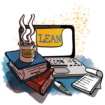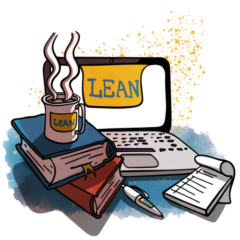-
How it works
How does it work?
Dmaic.com offers comprehensive and fully accredited online Lean training.
Read more Online packagesOnline trainingClassroom trainingsClassroom and in-company training
Online packagesOnline trainingClassroom trainingsClassroom and in-company trainingDmaic.com also offers classroom Lean and Lean Six Sigma training courses Read more
- Pricing
- Companies
- Knowledge
 Knowledge baseWant to know more about Dmaic and what Dmaic means for other companies? Check the Dmaic.com knowledge base.
Knowledge baseWant to know more about Dmaic and what Dmaic means for other companies? Check the Dmaic.com knowledge base. Online WorkshopsDon't immediately choose a course for you: do you want the knowledge and tools with which you can get started right away? Then a Dmaic-workshop is for you.
Online WorkshopsDon't immediately choose a course for you: do you want the knowledge and tools with which you can get started right away? Then a Dmaic-workshop is for you.- About
Unlocking Efficiency: The Complete Guide to Lean Management
Introduction to Lean Management
Lean management is a transformational methodology and philosophy dedicated to the promotion of ‘continuous improvement’ at various levels of an organization. Through Lean tools and techniques, companies can efficiently identify and root out process inefficiencies to yield instant and lasting results.
Introduced to the world more than half a century ago by Toyota Corporation, the Lean methodology has proven to be of immense benefit across numerous organization types and disciplines, earning the status of a universally recognized system for operational excellence.
The Pillars of Lean Management
At its roots, Lean management is founded on principles that have been standing the test of time. The primary goal of the methodology is to instill a long-term philosophy that will grow into a Lean culture within an organization.
This includes a commitment to sustain improvements and the ‘continuous improvement’ mindset among organizational staff and stakeholders. However, Lean management is not exclusive to long-term considerations. Through the use of Lean tools, organizations can readily experience immediate Process improvements.
Long-Term Lean Implementation
To sustain the transformation of an organization into a ‘continuous improvement’ culture, a Lean mental outlook is vital. A Lean mental outlook involves the transition to a values set centering on the addition of value to customers, the avoidance of activity waste, error, and the search for daily progress. Such a philosophical Lean conversion is a pivotal step towards ensuring the continued growth and efficiency of an organization.
Short-Term Lean Solutions
Lean management can also be utilized to resolve immediate process problems. With the use of Lean tools, organizations can quickly eradicate specific stumbling blocks leading to immediate successes and enhanced processes. The provision for Lean short-term solutions allows organizations the flexibility to identify and change short-term obstacles.
Conclusion: Lean Management as a Catalyst for Change
Lean Management as an Engine of Change Lean Management is a philosophy that fosters continuous improvement and operational excellence. Whether your organization requires a paradigm shifter or short-term solutions, play-around with Lean Management and see the results for yourself.

